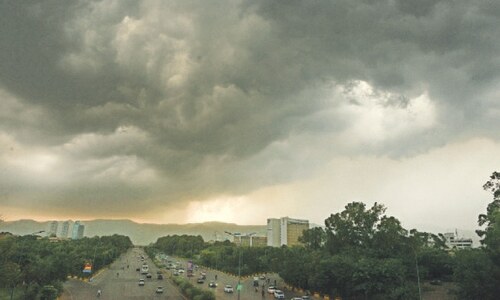ISLAMABAD: After the incident in which a large number of fish were found dead in Rawal Dam on Saturday, the Secretariat police have registered a case against four people on the charge of mixing poison in the water.
“Since last year, it is the third such incident and every time a case was registered. Though the suspects are identified, the police could not arrest them as they have fled. It seems such incidents occur because of a tussle between two groups over the fishing contracts in the lake,” investigation officer Imran Haider told Dawn.
Last year, reports about dead fish in the dam raised eyebrows among stakeholders.
The then chairman Senate Standing Committee on Climate Change Mir Mohammad Yousaf Badini also took notice of the incident. However, despite a number of investigations, the authorities could not reach a conclusion.
Secretariat police register case after fish were found dead in reservoir
Some people were of the opinion that trucks of poison was required for killing fish in the lake and it was impossible for anyone to use such a huge quantity of poison.
Experts were of the view that the water of the dam had become polluted because of the discharge of sewage and industrial waste into it.
The police investigation officer said the suspects were identified as they had uploaded pictures of the dead fish on social media.
“The persons who had uploaded the pictures on social media have been identified. The case has been registered on the application of Inspector Fisheries Department Mohammad Nadeem,” he said.
Constructed on Korang River in the 1960s, Rawal Dam is one of the main sources of drinking water for the residents of Rawalpindi.
The dam has a catchment area of 275 square kilometres and can store 84,000 acre feet of water in an average rainfall year.
Currently, around 40 nullahs, mostly carrying sewage, fall into the dam.
In July 2009, the then chief justice of Pakistan, Iftikhar Chaudhry, took suo motu notice of the contamination in the dam.
A number of hearings were held but the issue could not be resolved.
However, the district administration of Rawalpindi informed the court that the water from the dam was treated according to the standards of the World Health Organisation (WHO) and then supplied to the citizens.
Published in Dawn, September 17th, 2018















































Dear visitor, the comments section is undergoing an overhaul and will return soon.